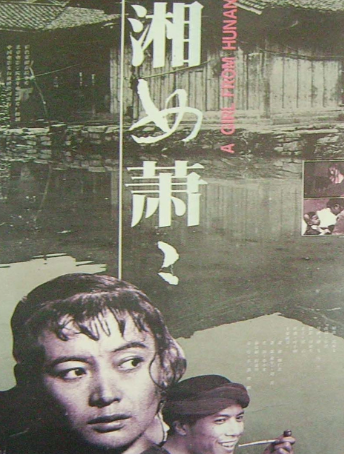
- English name:
- Broadcast time:March 28, 2012
- Starring:娜仁花
- director:谢飞、乌兰
Introduction
Today, I will introduce a Chinese film which called A Girl from Hunan (湘女萧萧xiāngnǔ xiāoxiāo). So let us have a brief introduction.
A Girl from Hunan (湘女萧萧Xiāngnǔ xiāoxiāo) is a 1986 Chinese drama film directed by Xie Fei (谢飞Xiè Fēi) and U Lan (乌兰Wū Lán). The film is based on a 1929 short story, Xiao Xiao (潇潇Xiāo Xiāo), by author Shen Congwen (沈从文Shěn Cóngwén).
Plot
A Girl from Hunan tells the story of a willful young girl who, at the start of the film, is about to enter into an arranged marriage with a two-year old child, Chun Guan (春官Chūn Guān). Xiao Xiao, the girl in question, is only twelve.
Left by her uncle in this remote village, Xiao Xiao is expected to be less of a wife than a mother to her new husband and lives under the domineering control of her mother-in-law. Now sixteen, Xiao Xiao catches the eye of a farmhand, Hua Gou (花狗Huā Gǒu). She lets herself be seduced by him and soon finds herself pregnant. Knowing that the traditional village still executes women for adultery, Xiao Xiao is desperate to abort the baby but fails to accomplish her goal.
With her pregnancy clear, Xiao Xiao faces the wrath of her mother-in-law, only to be saved by the appeal of her young husband, who has grown to love his wife, though perhaps more as a mother-figure than a spouse. When Xiao Xiao’s child, a boy, is born, her mother-in-law begins the process of marrying off the child to yet another adolescent girl.
The film was screened in the Un Certain Regard section at the 1987 Cannes Film Festival, and was one of the first mainland Chinese films to be commercially screened in the United States.
Professional evaluation
1、The protagonist is assimilated and dissolved by the social environment to reflect the cruelty of feudal forces. Feudal forces can not only suppress people’s dissatisfaction and resistance, but also make people submit and become a member of the cannibalistic ranks. The uniqueness and depth of this film lies in that it not only vividly depicts the cannibalistic fate circle, but also dissects this fate circle from a cultural perspective, allowing people to understand the root cause of the cannibalism of ethics that has been passed down from generation to generation and continues in an endless cycle.
2、The director of the film did not pursue too much fancy techniques, but always focused the lens on the tragic experience brought to Xiao Xiao by the deformed marriage, which not only highlighted the story of the character’s fate, but also induced the audience to think rationally in the gradual changes of the causal relationship of the plot, and cleverly integrated the modern aesthetic pursuit of exploring cultural philosophy unique to contemporary films with traditional narrative methods. The film uses the landscape of western Hunan to highlight the vitality of nature and the beauty of natural nature. When showing the courtyard where Xiao Xiao lives, it simulates natural light effects to render the atmosphere of the environment, giving people a sense of darkness, depression and heaviness. Through the inharmonious contrast between the natural environment and the social environment in visual images, it metaphorically implies the inevitability of natural nature being strangled in that society. In the mastery of the rhythm score, the director also takes stability and gentleness as the keynote, allowing the characters to show their psychological process in a very layered manner in a specific situation, making the film’s story narration like the natural flow of life, with deep thoughts in indifference. Narenhua, who plays Xiao Xiao, gives a simple, natural and profound performance, creating a vivid artistic image with flesh and blood, personality and emotion.













